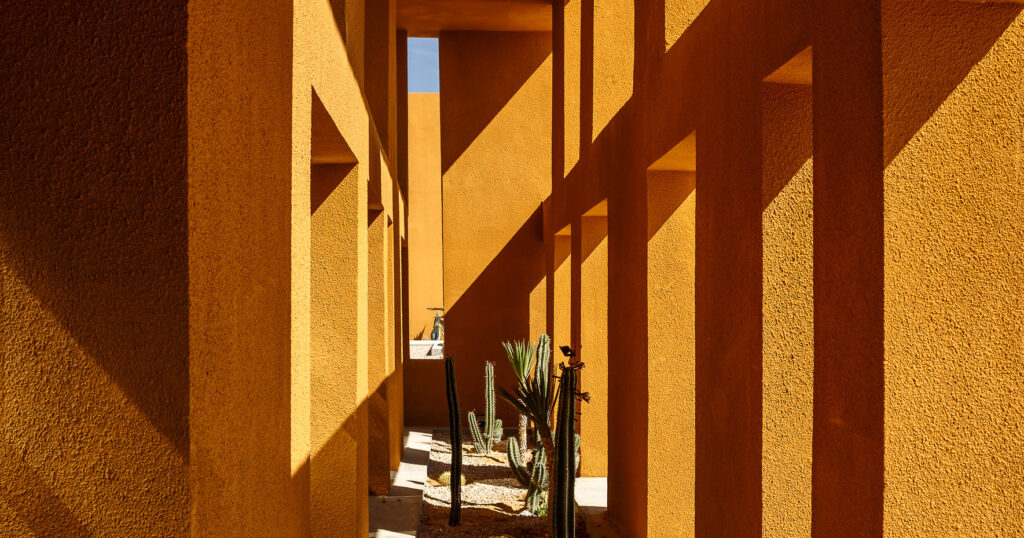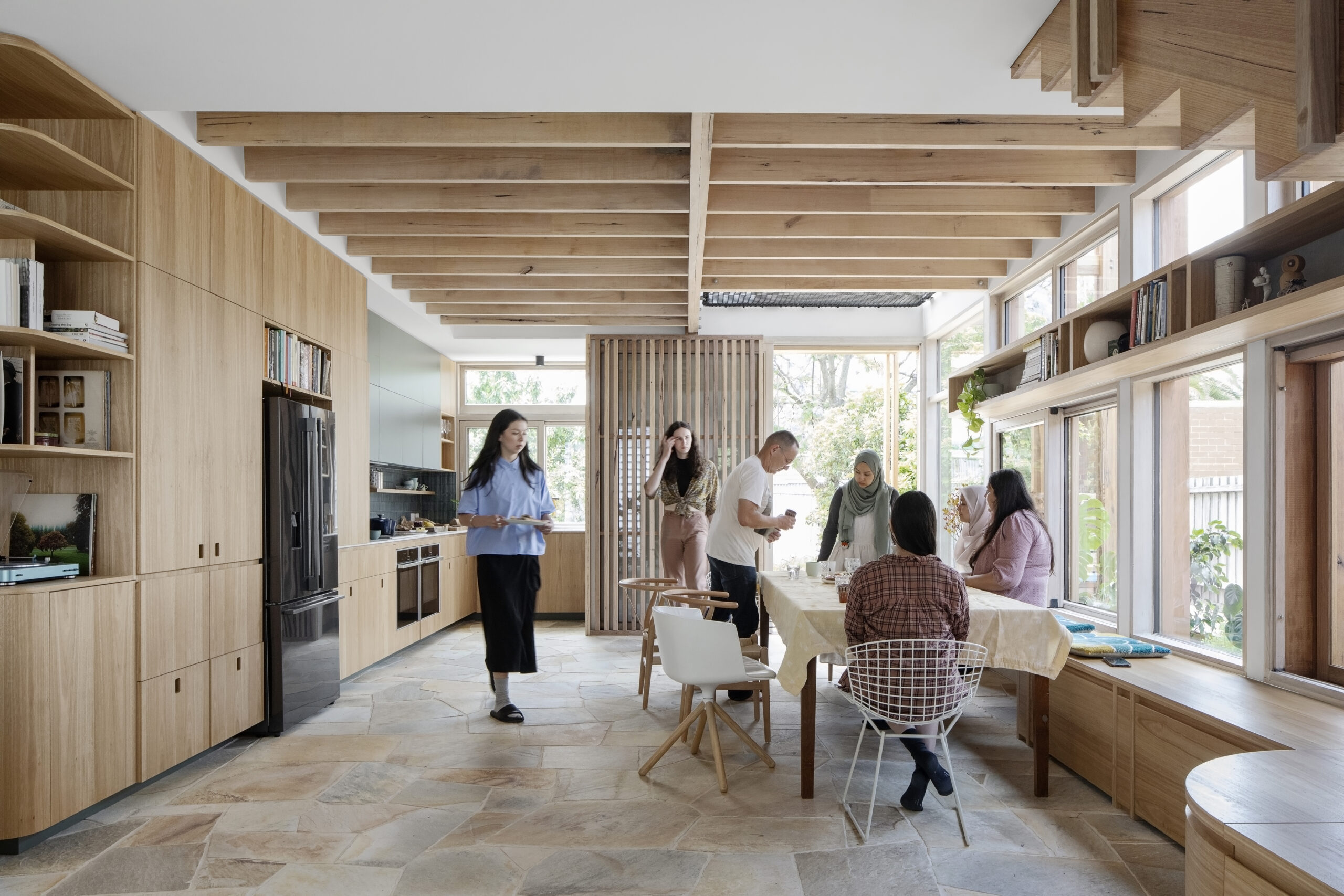How a Diverse Portfolio of Architectural Projects Unlocks the Wisdom of Travel
Designing in new places can be as transformative as travel. The post How a Diverse Portfolio of Architectural Projects Unlocks the Wisdom of Travel appeared first on Journal.

Ema is a trained architect, writer and photographer who works as a Junior Architect at REX in NYC. Inspired by her global experiences, she shares captivating insights into the world’s most extraordinary cities and buildings and provides travel tips on her blog, The Travel Album.
Architecture is often seen as the art of creating spaces, but at its core, it is also a profound act of storytelling — an interpretation of the cultural and historical essence of a place. Each design tells a story not only of its function but also of the people, traditions and environment that shape it. I believe that for architects, working on projects in unfamiliar and different locations can be as transformative as traveling. Both experiences demand an openness to the unfamiliar, a respect for local traditions, and a willingness to learn from the surroundings. They challenge preconceived notions and inspire innovative solutions, fostering a deeper connection between design and the diverse tapestry of human experience.
Architecture as a Two-Way Exchange


Pabellón 3E by TACO Taller de Arquitectura Contextual, Yucatan, Mexico
Just as a traveler learns to navigate new landscapes, tastes and customs, architects immersed in foreign projects confront the subtleties of cultural expectations, site-specific constraints and regional craftsmanship. Designing a library in Tokyo, for instance, requires an understanding of Japan’s spatial philosophies and reverence for light and shadow, while constructing a community center in Mexico may draw deeply on vibrant colors and the centrality of outdoor living. These lessons — rooted in context and sensitivity — shape not just the final design but also the architect’s worldview.
In a way, architecture becomes a two-way exchange: the design adapts to reflect the spirit of its environment, while the designer absorbs lessons that redefine their creative process. The result is not merely a structure but a living testament to the dialogue between cultures. Like travel, such experiences leave a lasting imprint, enriching not only the places we create but also the people we become. Architecture, at its best, is a deeply human endeavor that bridges the physical world with the cultural, historical, and emotional layers of a place. Just as travel exposes us to new perspectives and enriches our understanding of the world, working on a diverse portfolio of architectural projects offers a similar transformation. For architects, engaging with projects in varied locations and cultures isn’t just about creating buildings; it’s about creating connections and learning lessons that shape both professional and personal growth.
The Parallels Between Travel and Designing Across Cultures


House of the Big Arch by FrankiePappas, South Africa
Travel is often celebrated for its ability to broaden horizons. It challenges us to adapt to unfamiliar environments, embrace different customs, and appreciate new ways of living. Architecture, when approached with a similar openness, offers the same rewards. Designing for clients from diverse cultural backgrounds or creating spaces in vastly different environments requires an architect to step outside their comfort zone and approach each project with fresh eyes. For instance, consider the difference between designing a home in the dense, vertical cities of East Asia versus a sprawling ranch in the wide-open landscapes of the American Midwest. Beyond just technical adaptations, the architect must understand the cultural values tied to these spaces, such as the importance of communal living in Japan’s compact layouts or the celebration of solitude and vastness in the rural U.S. These insights are not just professional skills; they are cultural lessons that stay with an architect long after the project ends.
The House of the Big Arch by Frankie Pappas in South Africa demonstrates how architecture, like travel, thrives on adapting to and embracing unfamiliar contexts. Designed to weave through a private nature reserve, the house honors the land’s ecological and cultural significance, showing how architects can learn from and respect their environment. Much like understanding communal living in a dense city or solitude in rural landscapes, this project reflects South Africa’s ethos of environmental stewardship. By letting the site guide the design, it offers lessons in humility and cultural insight that extend beyond the project, proving that architecture, like travel, is a journey of empathy and discovery.
Working With Diverse Clients: A Masterclass in Human Connection


Camp Sarika by Amangiri by Luxury Frontiers, Canyon Point, Utah
Travel often fosters empathy by exposing us to diverse perspectives, teaching us to connect with people whose experiences and values differ from our own. Similarly, architects grow profoundly when working with clients from varied cultural and social backgrounds. These collaborations require more than technical expertise—they demand the ability to truly listen, adapt, and translate intangible aspirations into tangible spaces. Every project becomes a cultural exchange, where understanding the client’s traditions, values, and needs shapes the design’s authenticity. For instance, Camp Sarika by Amangiri in Canyon Point, Utah, exemplifies how architecture can thoughtfully balance universal appeal with cultural and environmental specificity. Nestled in a breathtaking desert landscape, the design embraces the raw beauty of its surroundings while delivering a luxurious experience. The camp’s tented pavilions blend into the rugged terrain, using natural materials and soft, earthy tones that echo the desert’s palette. Rather than overt cultural motifs, the design focuses on connecting guests to the natural world. Expansive views, minimalist interiors, and the careful positioning of structures allow the dramatic landscape to take center stage. This subtle approach respects the environment while creating a serene retreat for a global clientele seeking a deep connection to the land.
These experiences teach architects to navigate the delicate balance between universal design principles and cultural specificity. They develop a sensitivity that allows them to create spaces that resonate deeply with their users, reflecting not only functional needs but also emotional and cultural narratives. Ultimately, this cross-cultural engagement enriches an architect’s approach, turning each project into a journey of connection, discovery, and shared understanding.
Learning From Local Contexts: The Architect as a Cultural Observer

Travelers often marvel at the details of a new place — the texture of cobblestones underfoot, the rhythm of daily life, or the interplay of light and shadow in a market square. Architects working in unfamiliar locations must similarly become keen observers, immersing themselves in the local context to inform their designs. Take, for instance, the use of local materials. In the sun-baked regions of Morocco, earth-based construction techniques like rammed earth walls naturally regulate temperature, offering both sustainability and cultural authenticity. In contrast, the wood-heavy structures of Nordic countries celebrate the abundant forests and connection to nature. An architect who studies and incorporates these local traditions gains not just practical knowledge but also a deeper respect for the ingenuity embedded in regional design practices.
Situated in the arid climate of southern Morocco, the Laayoune Technology School project draws inspiration from traditional Moroccan construction techniques and the desert environment, demonstrating a profound understanding of local materials and cultural practices. The architects utilized earthy tones and textures that harmonize with the surrounding landscape, creating a building that feels like a natural extension of its environment. The use of courtyards, shaded walkways, and thick walls is not only practical for managing the region’s intense heat but also reflects the spatial strategies found in traditional Moroccan architecture. These design elements ensure thermal comfort while paying homage to the cultural and environmental ingenuity of the region.
The Professional and Personal Growth of a Globally Minded Architect


National Museum of Qatar by L’Observatoire International, Doha, Qatar
Just as travel changes the way we see the world, working on diverse projects reshapes the way architects approach design by pushing them beyond their comfort zones. Each new project presents unique challenges — different climates, materials, cultural norms and client expectations — that demand fresh, creative responses. This process not only sharpens an architect’s adaptability but also broadens their understanding of how architecture can truly serve human needs in varying contexts.
More importantly, this journey instills a deep sense of humility. Architects learn that they are not just designers but collaborators in a much larger narrative, one that includes the history, culture, and essence of a place. Every design decision becomes a conversation with its surroundings, ensuring the resulting spaces resonate with authenticity and purpose. This mindset transforms projects into opportunities for personal growth, as architects must listen, adapt, and immerse themselves in perspectives different from their own. This growth extends beyond the professional realm. Architects who embrace a diverse portfolio often find that their personal lives are similarly enriched. Lessons in collaboration, patience, and cultural appreciation influence how they approach relationships and interactions, fostering a deeper empathy and understanding of others. In this way, the act of designing becomes not just about creating buildings but also about building a more thoughtful, connected way of engaging with the world.
Designing With a Traveler’s Spirit
In both architecture and travel, the journey is as important as the destination. Gaining experience working on projects in different locations, with clients from varied backgrounds, is a journey of discovery — one that mirrors the transformative power of travel. It’s about more than building structures; it’s about building connections, understanding cultures and leaving each place a little better than you found it. For architects, this approach not only enhances their designs but also shapes them into global citizens, capable of weaving the threads of diverse stories into meaningful spaces. Just as every trip changes the traveler, every project in a new place leaves an indelible mark on the architect, proving that the world itself is the greatest classroom for those willing to explore.
Architects: Want to have your project featured? Showcase your work through Architizer and sign up for our inspirational newsletters.
The post How a Diverse Portfolio of Architectural Projects Unlocks the Wisdom of Travel appeared first on Journal.
What's Your Reaction?


















































